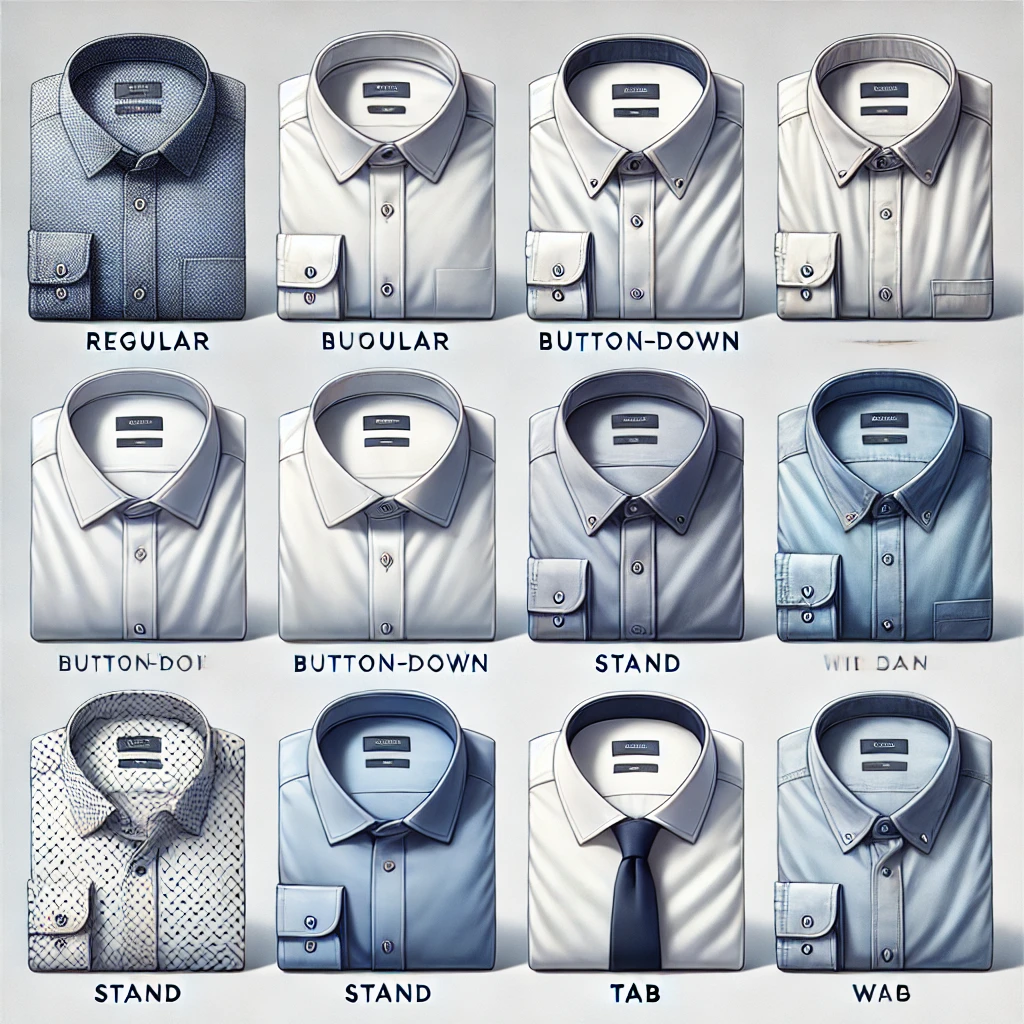
- Shirt Collars Can Transform Your Style: Understanding Their Features and Selection
- 1. The Importance of Shirt Collars in Fashion
- 2. Common Collar Styles and Their Features
- 3. Unique Collar Styles and Their Appeal
- 4. How to Choose the Right Collar for Your Face and Body
- 5. Common Mistakes to Avoid When Choosing Collars
- Conclusion
Shirt Collars Can Transform Your Style: Understanding Their Features and Selection
Choosing the right shirt collar is essential for enhancing your appearance and making a lasting impression. Whether it’s for formal meetings, casual gatherings, or special occasions, a well-selected collar can elevate your style and perfectly frame your face. In this article, we’ll explore various types of shirt collars, their features, and how to select one that complements your personal style and needs.
1. The Importance of Shirt Collars in Fashion
The significance of collars in shaping impressions
Collars serve as a critical focal point in shirts, directly influencing the overall look and feel of your outfit. For example, a sharp, structured collar conveys professionalism, while a more relaxed collar type suggests casual elegance. By understanding the psychological and visual impacts of collars, you can make more informed styling decisions.
The relationship between collar shapes and outfit coordination
The shape of your collar can enhance or detract from the cohesiveness of your ensemble. For instance, a wide collar pairs harmoniously with larger tie knots and structured jackets, while button-down collars work seamlessly with knitwear for a laid-back vibe. Careful consideration of these details helps achieve a polished look.
Selecting collars for different occasions
TPO (time, place, occasion) plays a vital role in collar selection. Formal events often demand classic styles like regular or wide collars, whereas casual outings provide room for experimentation with unique options such as mandarin collars or button-downs. By tailoring your choice to the context, you ensure your style aligns with expectations.
2. Common Collar Styles and Their Features
Regular collars: The all-purpose choice
Regular collars, also known as straight point collars, are a timeless choice suitable for nearly all occasions. Their moderate spread works well with most face shapes and is compatible with a variety of tie knots. This versatility makes them a staple in both casual and formal wardrobes.
Button-down collars: Casual elegance
Button-down collars are characterized by small buttons that secure the collar points to the shirt. Originally designed for sports, they now add a casual yet refined touch to everyday outfits. Pair them with chinos for a relaxed office look or denim for weekend wear.
Wide collars: A modern, bold statement
Wide collars, often called cutaway collars, feature an expansive spread that accommodates large tie knots like the Windsor. Their sharp angles create a striking and contemporary appearance, perfect for formal events or when you want to make a bold fashion statement.
3. Unique Collar Styles and Their Appeal
Stand collars: Minimalist charm
Stand collars, also known as band collars, lack the traditional collar flaps, offering a clean and modern aesthetic. They’re ideal for hot weather or occasions where simplicity is key. For example, pairing a stand collar shirt with linen trousers creates a relaxed yet sophisticated summer outfit.
Tab collars: A unique and formal choice
Tab collars feature a small tab that fastens underneath the tie, lifting the knot and creating a neat, elevated appearance. While less common, they exude a vintage charm reminiscent of mid-century fashion. A tab collar shirt paired with a slim tie and tailored suit is an excellent choice for weddings or formal dinners.
Wing collars: Reserved for the most formal events
Wing collars are synonymous with black-tie and white-tie events. Their distinctive design, with small, pointed “wings,” complements bow ties and tuxedos. For instance, a wing collar shirt is the perfect choice for galas, award ceremonies, or opera nights.
4. How to Choose the Right Collar for Your Face and Body
Collar shapes that suit different face types
Face shape significantly influences which collars look best on you. For example, individuals with round faces benefit from sharp, elongated collars like the regular or tab collar, as they add verticality. Conversely, those with narrow faces should opt for wider collars to balance proportions.
Neckline tips for creating a streamlined appearance
Shorter necks appear longer with collars featuring higher stands, such as stand or tab collars. Meanwhile, wide collars create a broader appearance and are ideal for those seeking to emphasize the shoulders and chest.
Matching collars to body proportions
Tall individuals can experiment with larger collar spreads without overwhelming their frame, while petite individuals should stick to smaller, more proportionate designs. For example, a small button-down collar complements a slender figure perfectly.
5. Common Mistakes to Avoid When Choosing Collars
Ignoring the harmony between collar and shirt
A common pitfall is selecting collars that clash with the shirt’s overall design. For instance, pairing a formal wing collar with a casual fabric like chambray creates a mismatched look. Consistency in style is crucial.
Overlooking compatibility with accessories
Collars and accessories like ties should complement each other. Wide ties pair best with wide collars, while slim ties are more suited to narrow collars. Neglecting this compatibility can disrupt the visual flow of your outfit.
Following trends without considering personal style
While trendy collars can be appealing, they may not align with your wardrobe or body type. Instead of chasing trends, focus on timeless options that suit your aesthetic and needs.
Conclusion
Understanding the nuances of shirt collars empowers you to make informed style choices that enhance your wardrobe. By considering factors such as occasion, face shape, and personal preferences, you can select collars that perfectly complement your look. Experiment with different styles and find the one that resonates most with your unique style.



Comment